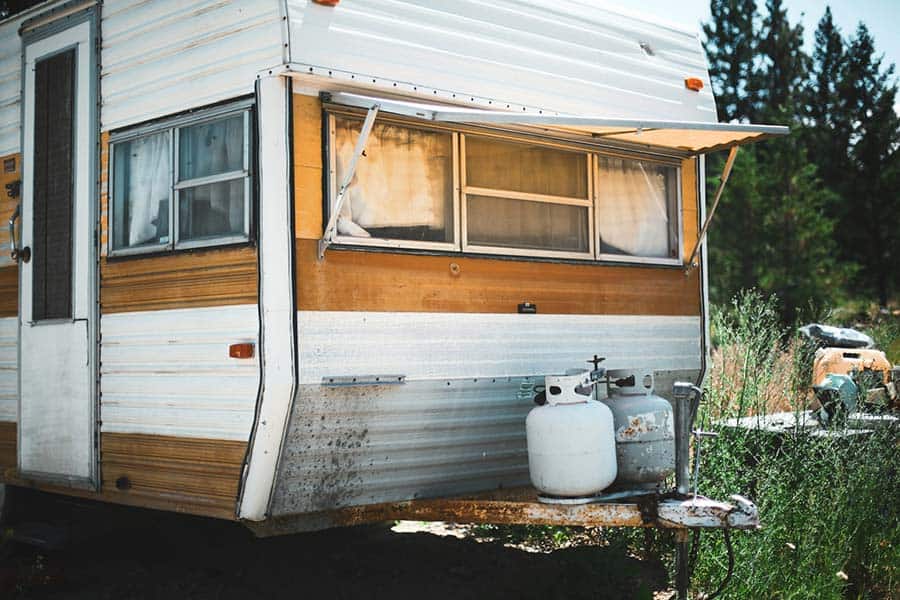
Propane is a versatile and widely used fuel source, serving various purposes in residential, commercial, and industrial settings. Understanding the size of a standard propane tank is essential for anyone considering propane as an energy source. Whether you’re a homeowner looking to power your appliances or a business owner considering propane for your operations, this comprehensive guide will provide the knowledge needed to make informed decisions about propane tank sizes. This article will explore the different standard propane tank sizes, factors influencing your choice, and essential safety and maintenance considerations. So, let’s dive in and discover how big a standard propane tank is.
How big is a standard propane tank?
A standard propane tank typically comes in various sizes, catering to different needs. The most common sizes for residential use include 20-pound (5-gallon) tanks, 30-pound (7.5-gallon) tanks, 40-pound (10-gallon) tanks, 100-pound (25-gallon) tanks, and 420-pound (100-gallon) tanks. Portable propane tanks are smaller, ranging from 1-pound (0.25-gallon) disposable cylinders to 11-pound (2.6-gallon) portable tanks. Industrial propane tanks range from 500 gallons to larger 30,000-gallon bulk storage tanks. The choice of tank size depends on your specific usage requirements, available space, and local regulations.
Standard Propane Tank Sizes
20-pound (5-gallon) propane tank: This size is commonly called a barbecue or grill tank. It’s portable and ideal for small-scale outdoor cooking appliances, such as gas grills and camping stoves. Many homeowners use these for occasional grilling.
30-pound (7.5-gallon) propane tank: Slightly more significant than the 20-pound tank, the 30-pound tank is still portable and often used for outdoor heating devices like patio heaters or small cooking appliances. It provides more extended use between refills.
40-pound (10-gallon) propane tank: This tank size is a step up from the 30-pound tank and is often used for medium-sized appliances, such as some residential water heaters, dryers, or stoves. It’s a suitable option for homeowners who want propane for a few essential appliances.
100-pound (25-gallon) propane tank: The 100-pound tank is a common choice for larger residential heating systems and appliances. It can also serve as a backup power source for homes during emergencies, such as power outages.
420-pound (100-gallon) propane tank: This size is popular for residential heating and powering multiple appliances, including furnaces, water heaters, stoves, and dryers. It’s a good option for homeowners who rely on propane as their primary energy source.
500-gallon propane tank: Moving into larger tank sizes, the 500-gallon tank is typically used in commercial and small industrial applications. It can supply fuel to multiple appliances, such as commercial stoves, heaters, and generators.
1,000-gallon propane tank: This size is suitable for larger commercial and industrial purposes, providing a significant propane supply for manufacturing, processing, or large-scale energy needs.
30,000-gallon propane tank (bulk storage): Reserved for industrial or large-scale operations, these tanks are massive and used for bulk propane storage, often at distribution centers, manufacturing facilities, or utilities. They ensure a steady supply of propane for extensive operations.
Common Uses Of Propane
Propane, a versatile and clean-burning hydrocarbon gas, has many applications across various sectors. Its efficient combustion and relatively low environmental impact make it a preferred choice for many energy needs. Here’s a more detailed look at some common uses of propane:
Residential Heating:
Propane is widely used for heating homes, particularly in areas without access to natural gas. It powers furnaces, boilers, and space heaters, providing reliable warmth even in extreme cold conditions. Propane heating systems can be found in both urban and rural settings.
Cooking:
Propane is a go-to choice for residential and commercial kitchens. It is utilized in gas stoves, ovens, grills, and outdoor cooking appliances. Chefs appreciate propane’s precise temperature control, allowing for precise culinary creations.
Hot Water Heating:
Propane water heaters are highly efficient and provide a continuous supply of hot water for showers, baths, dishwashing, and other domestic purposes. They are a reliable and cost-effective option for residential and commercial applications.
Drying:
In laundromats and commercial laundry facilities, propane dryers are favored for their speed and efficiency in quickly drying clothes. They are handy for businesses that must process large volumes of laundry daily.
Fireplaces and Hearth Products:
Propane fireplaces and log sets offer the warmth and ambiance of a traditional wood-burning fireplace without the hassle of collecting, storing, and cleaning up after wood. They are popular in both residential and commercial settings.
Backup Power:
Propane-powered generators are crucial backup power sources during electrical outages. They are reliable and can supply electricity to homes, businesses, and critical equipment, ensuring minimal disruption during emergencies.
Outdoor Grilling:
Propane is the fuel for outdoor grilling due to its convenience, quick heating, and precise temperature control. Propane grills are found in countless backyards, parks, and recreational areas.
Refrigeration:
Propane refrigerators are commonly used in off-grid or remote locations where electricity is scarce or unreliable. They are a staple in cabins, RVs, camping trailers, and remote cottages, providing reliable cooling for perishable goods.
Forklifts:
Propane is the preferred fuel for forklifts in warehouses, distribution centers, and industrial facilities. Propane-powered forklifts are highly efficient, emit fewer pollutants, and offer consistent performance for material handling tasks.
Agriculture:
Propane plays a significant role in agriculture. It is used for crop drying, particularly for grains like corn and wheat. Propane-powered equipment, such as tractors and irrigation pumps, contributes to efficient farming operations.
What Factors Affecting Propane Tank Size Selection?
Selecting the right propane tank size is crucial, as it directly impacts your ability to meet your energy needs efficiently and cost-effectively. Several factors should be considered when determining the appropriate propane tank size for your situation. These factors include:
Your anticipated propane consumption is the most critical factor in selecting a propane tank size. Consider the number and type of appliances, equipment, or systems you plan to fuel with propane. Calculate their total propane usage, including both daily and seasonal requirements. A larger tank may be necessary if you have high propane demand.
The physical space available for tank installation significantly affects tank size selection. Ensure you have room for the chosen tank without violating local building codes or safety regulations. Above-ground tanks often have space constraints due to height and footprint, while underground tanks require excavation and clearances.
Consult with local authorities and review zoning codes and regulations that pertain to propane tank installations in your area. Different regions may have specific requirements regarding tank size, placement, and safety distances from buildings, property lines, and ignition sources.
The cost of a propane tank can vary significantly based on its size. Larger tanks generally have a higher upfront cost, but they may offer cost savings in the long run by reducing the frequency of propane deliveries. Consider your budget and whether investing in a larger tank upfront makes financial sense or opt for a smaller tank with more frequent refills.
The size of your propane tank can affect the frequency of propane deliveries. Smaller tanks may require more frequent refills, which can be inconvenient and potentially more expensive due to delivery fees. A larger tank can extend the time between refills, providing more autonomy and cost savings.
In some cases, propane usage can vary significantly throughout the year. For example, heating demands during winter months may be higher than during the rest of the year. Consider any seasonal fluctuations in your propane needs when selecting a tank size to ensure it can accommodate peak usage periods.
Consider your plans and whether your propane needs might change. If you anticipate adding more appliances or expanding your usage, choose a larger tank to accommodate potential growth without needing to replace it.
Efficiency and Conservation: Energy-efficient appliances and conservation practices can reduce propane consumption. Evaluate your energy efficiency measures and factor them into your tank size calculation to avoid overestimating your propane needs.
Conclusion
Understanding the factors that affect propane tank size selection is vital for ensuring a reliable and efficient propane supply for your home, business, or specific application. The right propane tank size can optimize energy usage, reduce delivery frequency, and align with budgetary constraints while complying with local regulations and accommodating future growth. By carefully considering your propane consumption, available space, local regulations, budget considerations, seasonal variations, and potential changes in your usage patterns, you can make an informed decision about the appropriate tank size. Consulting with a propane supplier or technician can provide valuable insights and recommendations tailored to your needs.


